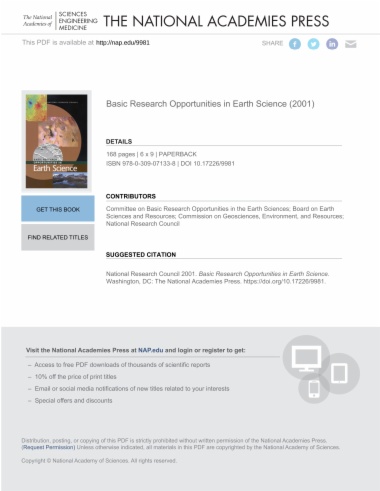Basic Research Opportunities in Earth Science identifies areas of high-priority research within the purview of the Earth Science Division of the National Science Foundation, assesses cross-disciplinary connections, and discusses the linkages between basic research and societal needs. Opportunities in Earth science have been opened up by major improvements in techniques for reading the geological record of terrestrial change, capabilities for observing active processes in the present-day Earth, and computational technologies for realistic simulations of dynamic geosystems. This book examines six specific areas in which the opportunities for basic research are especially compelling, including integrative studies of the near-surface environment (the "Critical Zone"); geobiology; Earth and planetary materials; investigations of the continents; studies of Earth's deep interior; and planetary science. It concludes with a discussion of mechanisms for exploiting these research opportunities, including EarthScope, natural laboratories, and partnerships.
- Cover
- Front Matter
- Executive Summary
- 1. Basic Earth Science and Society
- 2. Science Opportunities
- 3. Findings and Recommendations
- Appendix A: Earth Science Programs
- Appendix B: Community Input
- Acronyms

